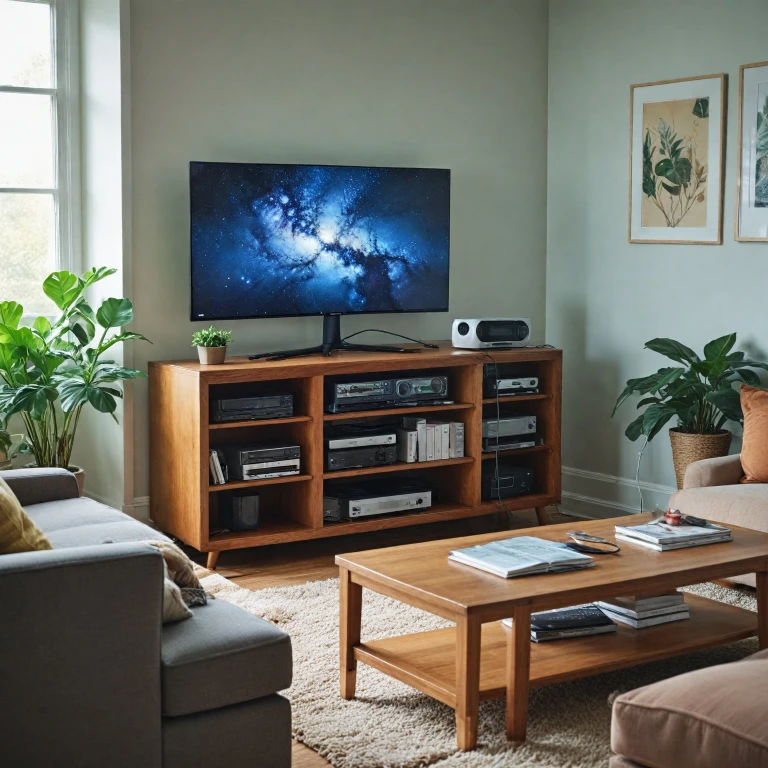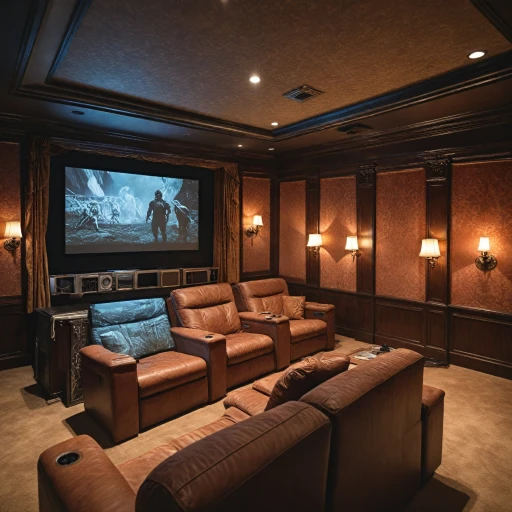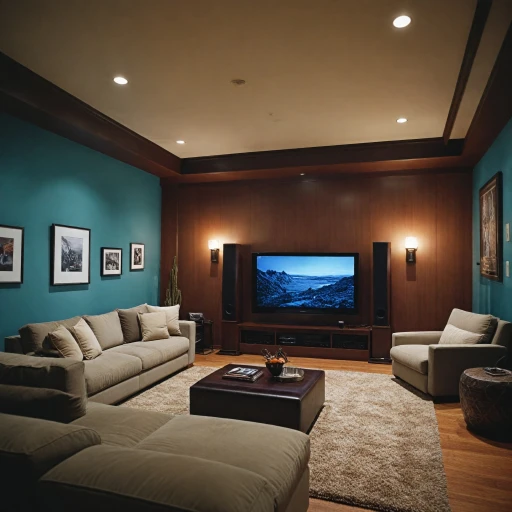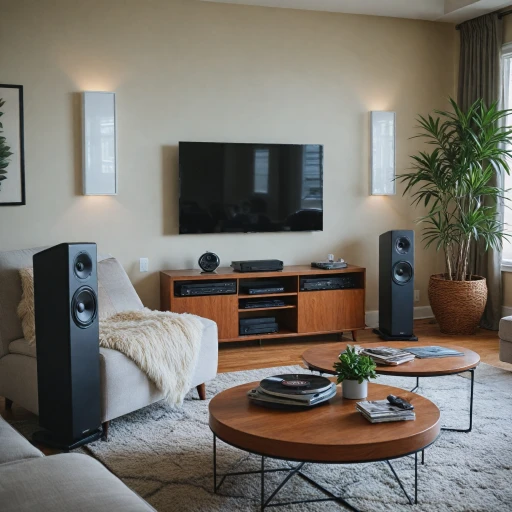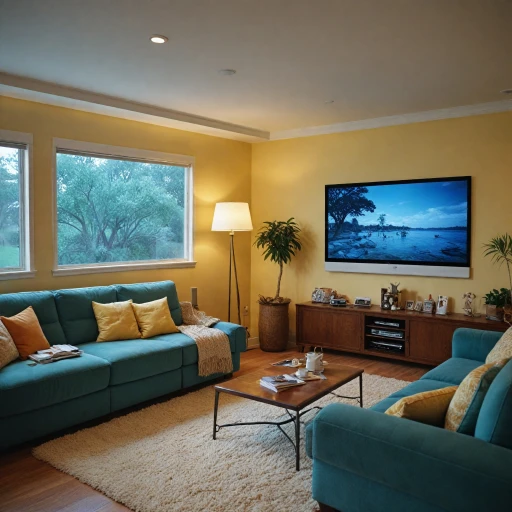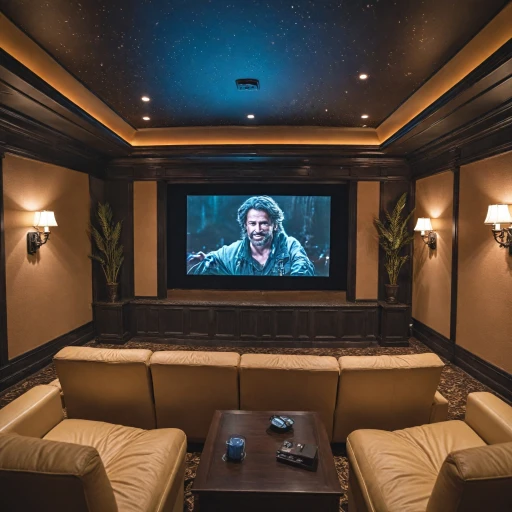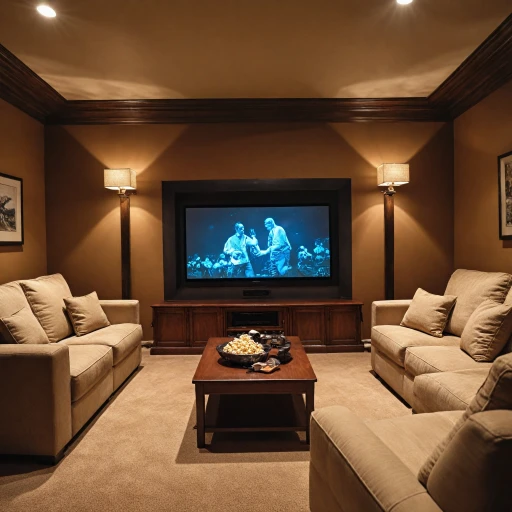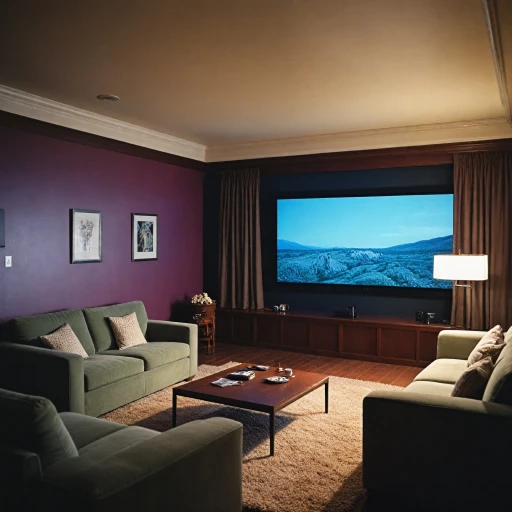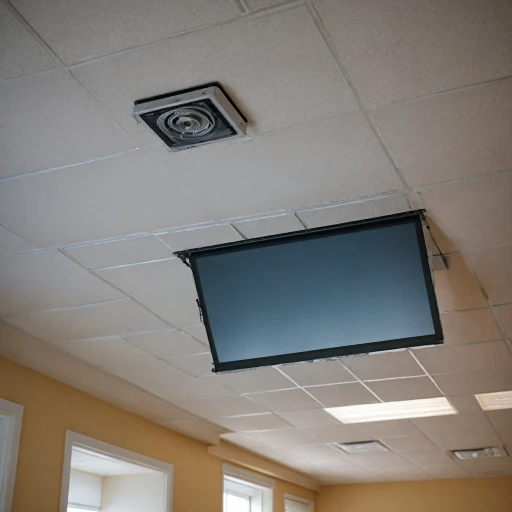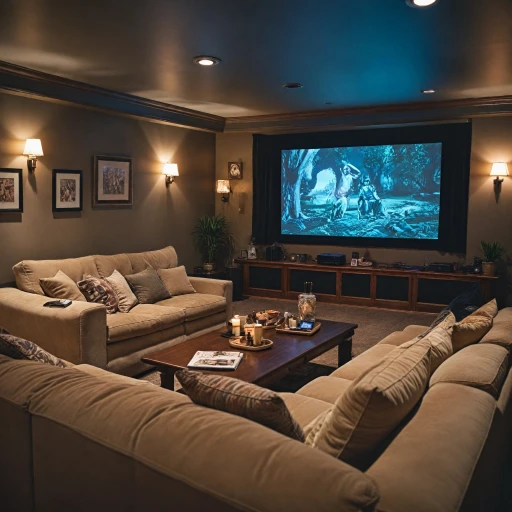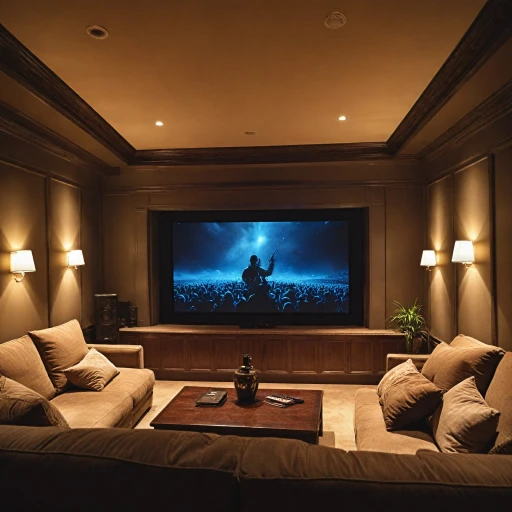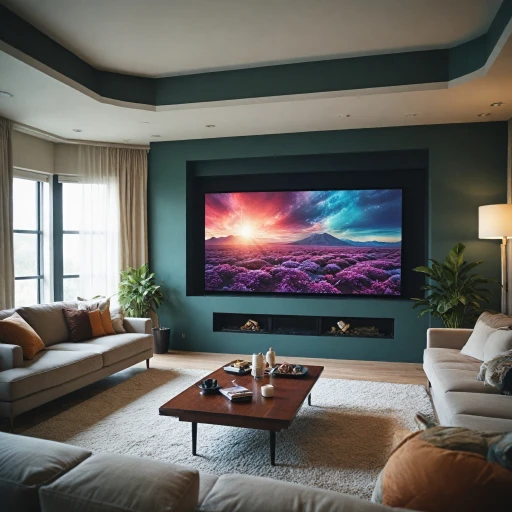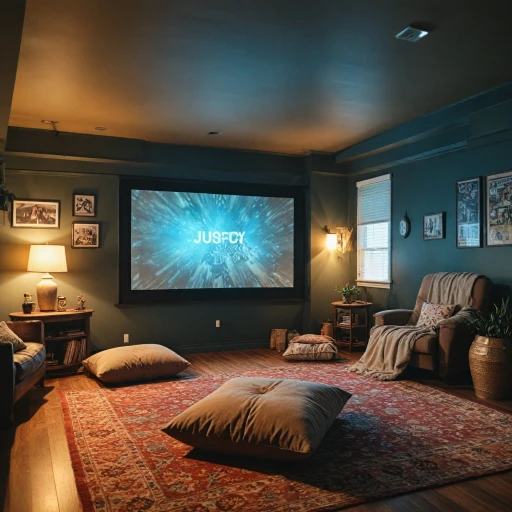
The Basics of DisplayPort and HDMI
Exploring the Core Standards: DisplayPort vs. HDMI
In today's tech-driven world, understanding the differences between DisplayPort and HDMI can help you choose the right option for your home theater projector. These connections, although similar in function, are distinct in their capacities and use cases. While both carry audio and video signals, each has its unique standards and specifications.
The HDMI cable, a long-time favorite, is widely recognized for its role in connecting TVs, projectors, and monitors. Known for its ease of use and widespread availability, HDMI supports high-definition video and audio. The gold plated connectors often found on HDMI cables ensure less interference and better signal quality, which is crucial for rich image clarity.
On the other hand, the DisplayPort connection is commonly used for connecting PCs to monitors, offering high resolutions and refresh rates. Unlike its HDMI counterpart, DisplayPort can support multiple monitors on a single cable, a feature especially appealing for gamers or professionals seeking expanded displays. The DisplayPort male to HDMI adapter enables a cross-connection, crucial when dealing with incompatible ports.
Choosing between DisplayPort and HDMI depends on various factors, including the desired video output capabilities and your specific home theater setup needs. Both cables offer robust video and audio transmission, but understanding your projector's input/output specifications will help you make an informed decision.
Choosing the Right Connection for Your Projector
Identifying the Ideal Video Interface for Projector Integration
When selecting the appropriate connection for your home theater projector, it's crucial to evaluate the capabilities and needs of your particular projector and source devices. A direct connection using either a DisplayPort or HDMI interface can offer a reliable and effective video transmission solution, but the choice between these options should align with the specific configurations of your setup. A key factor in deciding which connection to use is the specific ports available on your projector and media devices. For newer models, you may find a variety of inputs including HDMI, DisplayPort, and potentially even a mini DisplayPort. An HDMI connector is often favored due to its widespread use and ability to carry both video and audio signals through one cable, which keeps cable management tidy. Consider these aspects when making your choice:- Compatibility: Check if your devices have HDMI, DisplayPort, or both. This will determine if you will need a direct cable or an adapter converter, such as a DisplayPort to HDMI adapter.
- Resolution and Refresh Rate Requirements: HDMI 2.0 and above supports up to 4K resolution at 60Hz, making it suitable for most modern home theaters. DisplayPort, however, can surpass HDMI capabilities with support for higher resolutions and refresh rates due to its advanced technology.
- Audio Needs: HDMI cables facilitate audio and video transmission in a single connection, which can be advantageous for a streamlined setup. If you opt for DisplayPort, ensure that your audio is managed appropriately, potentially requiring additional adapters if your projector doesn't natively support DisplayPort audio.
Assessing Performance and Quality of Connection
Ensuring that your cable is of high quality is another critical step. Opt for cables with gold plated connectors and male connectors that are of good build quality. These offer better conductivity and a trustworthy connection. In some cases, using a passive adapter from DisplayPort to HDMI may suffice; however, evaluate if an active adapter is required especially when dealing with higher resolutions. To enhance your sound experience while ensuring the best video connection, take a moment to look into additional audio solutions, such as using the right optical cable for your soundbar. Enhance your sound experience further and strike the perfect harmony between impeccable video and immersive audio. Choosing cables classified as series HDMI or DisplayPort can offer guarantees of quality that standard cables may not. Understanding these distinctions can guide you to the optimal setup for your home theater projector, capitalizing on the features of each standard while conscientiously choosing the ideal components for unparalleled entertainment. This measured approach will also aid in future-proofing your home theater systems as technology continues to evolve.Advantages of Using DisplayPort in Home Theaters
Why DisplayPort Holds an Advantage in Home Cinemas
In the realm of advanced home theater setups, the DisplayPort is often lauded for its superior capabilities in delivering high-quality audio and video signals. Unlike its HDMI counterpart, DisplayPort supports higher resolutions and refresh rates, making it particularly suited for those who aspire for top-notch visual experiences.
DisplayPort is designed to handle high-bandwidth video formats and offers a significant edge when connecting to state-of-the-art projectors or monitors. Its architecture allows for a more stable and potentially longer cable connection, reducing the chances of interference that could affect picture quality.
Moreover, DisplayPort connections often come with gold-plated connectors, which combat oxidation and ensure consistent transmission quality. This is a notable advantage in high-end home theater settings where every detail counts, from the vividness of colors to the depth of blacks and whites.
While HDMI remains a popular standard, especially with its user-friendly interface and widespread compatibility, DisplayPort's versatility, including its capacity to daisy chain displays, makes it a compelling choice for more complex home theater setups. Its reliability in delivering high-resolution video, coupled with support for multiple audio formats, can enhance the home cinema experience significantly.
When to Use DisplayPort to HDMI Adapters
Utilizing Adapters to Bridge Connections
In the evolving realm of home theaters, having the right connections for your projector is paramount. Occasionally, equipment may come equipped with different types of ports such as DisplayPort and HDMI, which necessitates the use of adapter cables to bridge these connections effectively.
When encountering a projector with a DisplayPort output and a receiver featuring HDMI input, an adapter converter becomes essential. Opt for a high-quality passive adapter with gold plated connectors to ensure clear video transmission and signal integrity. This method can maintain the video's resolution up to 4K if your components support it. Selecting an HDMI cable from a reputable series can make a noticeable difference in performance.
It's worth noting that while these adapters and cables enhance connectivity, they might not support all features native to each port, like some audio standards. Therefore, when choosing cables and adapters, prioritize those with a displayport connection that offers a stable and seamless transition between displayport to HDMI.
Adapters featuring a male connector on one end and HDMI female on the other often fill this requirement, turning your displayport into a fully functional HDMI displayport, ready for your home theater setup. Remember to verify if the adapter will work with your specific equipment model to avoid any compatibility issues.
For additional information on optimizing connections and resolving any potential issues, you might find our resources on adapter compatibility beneficial.
Troubleshooting Common Connection Issues
Troubleshooting Common Connection Issues
Setting up a home theater projector can sometimes lead to connectivity hiccups, especially when dealing with HDMI and DisplayPort connections. Here are some common issues you might encounter and how to resolve them.
- No Signal Detected: Ensure that all cables are securely connected. The male connector of your DisplayPort output or HDMI cable should be fully inserted into the respective port. If using an adapter converter, double-check that the connectors are properly seated. Verify that the port and display settings on your monitor match the expected input of your projector.
- Incompatible Resolutions: Some projectors or monitors may not support the resolution output by the connected device. Check the video settings on your source device, and try adjusting the resolution to a standard that both the mini DisplayPort or HDMI can support.
- Intermittent Connection: Faulty cables or connectors can cause signal dropouts. If encountering connection instability, try different cables. Opt for high-quality cables with gold-plated connectors, which can enhance connection reliability. Be cautious with adapter cables and ensure they are not passive, as these may not relay the signal correctly over long distances.
- Color Distortion or Artifacts: If the color seems off or if you notice artifacts, the cable may be at fault. Replace it with a series HDMI or a standard DisplayPort cable that's known for delivering high-quality video. A black screen might indicate more severe issues with the device's settings or cable integrity.
- Adapter Compatibility: When using a DisplayPort to HDMI connection, make sure that any used adapter, whether it's a mini or standard, is compatible with the components in use. Not all adapters will work seamlessly across all devices, so checking compatibility is key.
By ensuring that cables and adapters are correctly chosen and installed, most issues can be resolved efficiently, paving the way for an optimized home theater experience.
Future-Proofing Your Home Theater Setup
Staying Ahead of Technology Trends in Your Home Theater
Future-proofing your home theater setup is essential to ensure that it adapts to emerging technologies. A critical aspect of achieving this is selecting the appropriate cables and connectors, be it HDMI, DisplayPort, or adapter converters. In recent years, DisplayPort connections have gained popularity for their high video quality and versatile functionality, making them a preferred choice in modern home theater systems. While HDMI remains a standard for most consumer electronics, DisplayPort offers unique advantages such as daisy-chaining displays and enhanced video capabilities. To ensure seamless integration, consider the types of devices you'll want to connect to your projector in the future. DisplayPort male and mini DisplayPort options provide flexibility, but keep HDMI cables and HDMI adapters at hand for compatibility with older or different devices. Here are some tips to future-proof your setup:- Opt for High-Quality Cables: Invest in gold plated connectors to ensure better durability and connection quality. HDMI cables and DisplayPort male connectors with plated connectors reduce signal degradation over time.
- Stay Versatile with Adapter Cables: Using an HDMI adapter or a passive adapter for your HDMI DisplayPort needs can prepare your system for a range of devices.
- Use Compatible Adapters Wisely: While a black adapter converter can help bridge gaps between HDMI and DisplayPort, using them sparingly can help maintain signal integrity.
